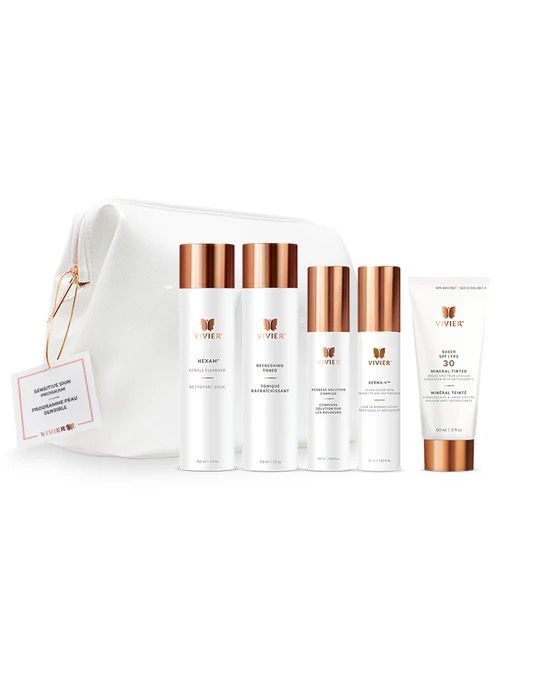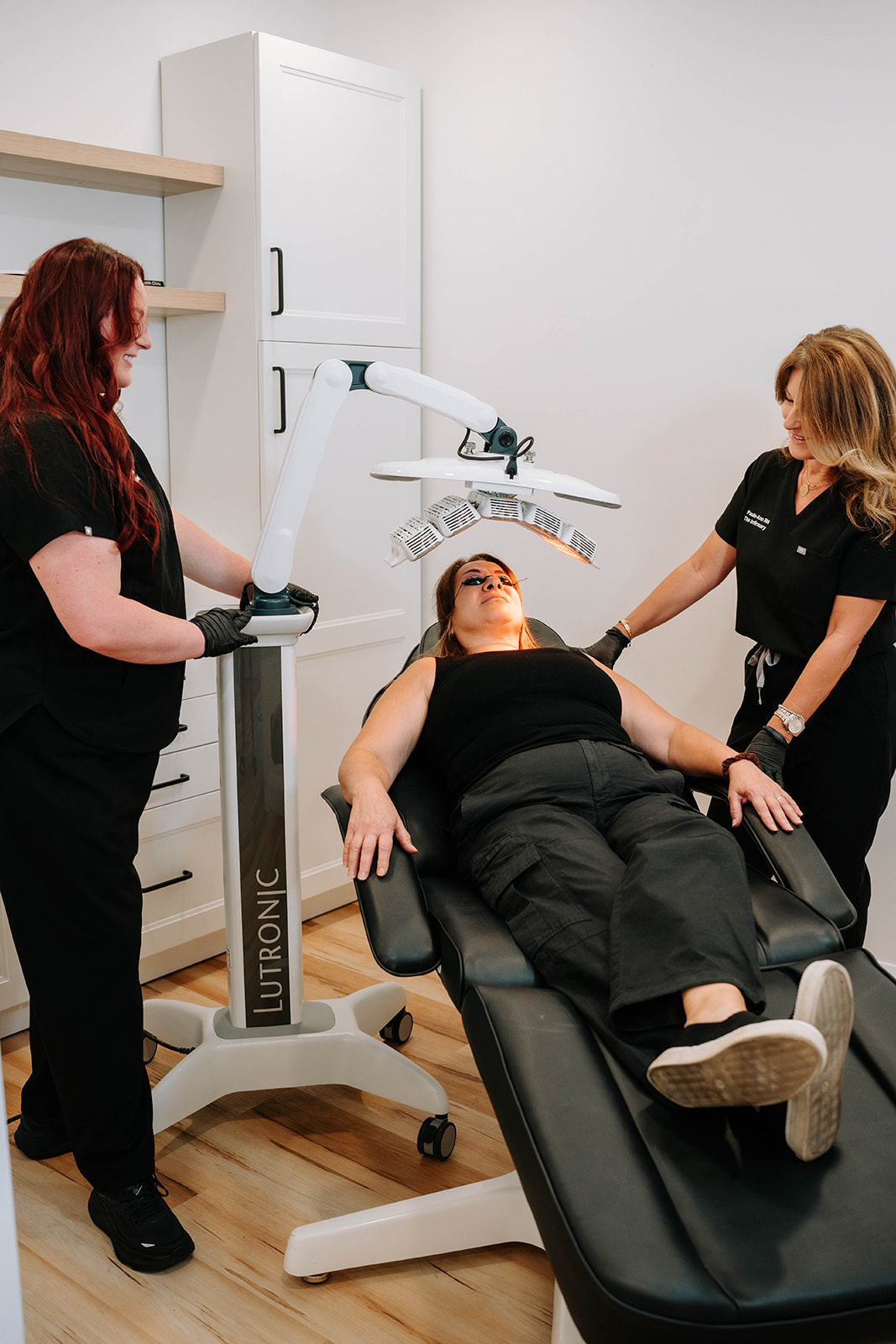rosacea/redness.
WHAT IS ROSACEA?
Rosacea is a chronic skin condition that causes visible redness, flushing, and sometimes small bumps or dilated blood vessels on the face. It often appears across the cheeks, nose, and chin, and can make the skin feel warm, sensitive, or easily irritated. While the exact cause isn’t fully understood, rosacea is linked to inflammation, genetics, an overactive immune response, and triggers such as heat, alcohol, spicy food, or stress.
Rosacea can fluctuate in intensity — flaring up and calming down — and is often mistaken for acne or sensitive skin. Although it can’t be cured, modern treatments and professional skincare can dramatically reduce redness, calm inflammation, and strengthen the skin’s natural barrier for long-term control and comfort.
How We Treat
Following a detailed consultation, we customize your treatment plan using one — or a strategic combination — of the therapies below, tailored to your unique skin needs:
- Clarity II (Vascular Laser)
- Glacial Rx (Cryotherapy)
- Healite
Compatible Products

To support and extend your in-clinic results, we recommend the following pharmaceutical-grade products as part of your at-home routine:
- Vivier Sensitive Skin Program
- Sunscreen
- Vivier Redness Solution Complex
- Vivier Serum 10
- Vivier Crème 47
- CO2 Lift Mask
Frequently Asked Questions
1. What can trigger rosacea?
Common triggers include heat, sun exposure, alcohol, spicy foods, caffeine, stress, and temperature changes. Even certain skincare products or ingredients can cause irritation. Identifying and minimizing your personal triggers is one of the most effective ways to manage flare-ups.
2. What are the types of rosacea?
There are four main types:
- Erythematotelangiectatic Rosacea: Persistent redness and visible blood vessels.
- Papulopustular Rosacea: Redness with acne-like bumps or pustules.
- Phymatous Rosacea: Thickened skin, often on the nose or chin.
- Ocular Rosacea: Affects the eyes, causing redness or irritation.
Many people experience an overlap of these subtypes, and treatment plans are tailored to address specific symptoms.
3. Can rosacea be cured?
Rosacea is a chronic condition without a permanent cure, but it can be effectively controlled. With consistent care, flare-ups can be reduced in both frequency and intensity. Treatments that calm inflammation, strengthen capillaries, and cool the skin can significantly improve comfort and appearance over time.
4. What is the difference between rosacea and couperose?
While they look similar, couperose refers specifically to visible, dilated capillaries near the surface of the skin — often a feature of rosacea, but not the same condition. Rosacea involves broader inflammation and sensitivity, whereas couperose skin may only show redness or broken vessels without the underlying inflammatory component.



